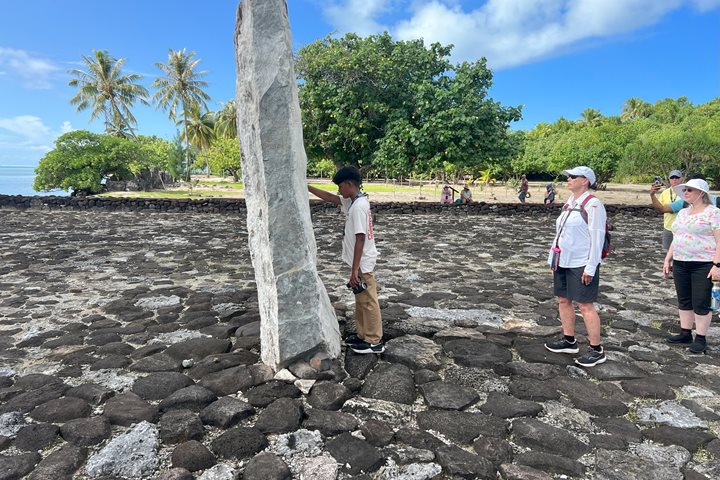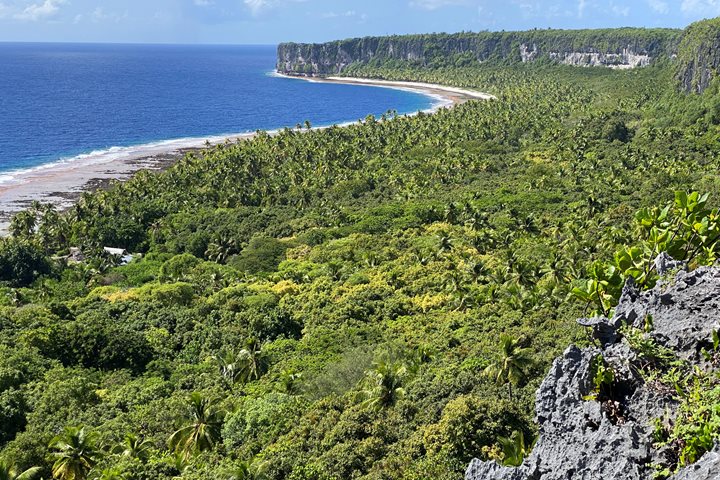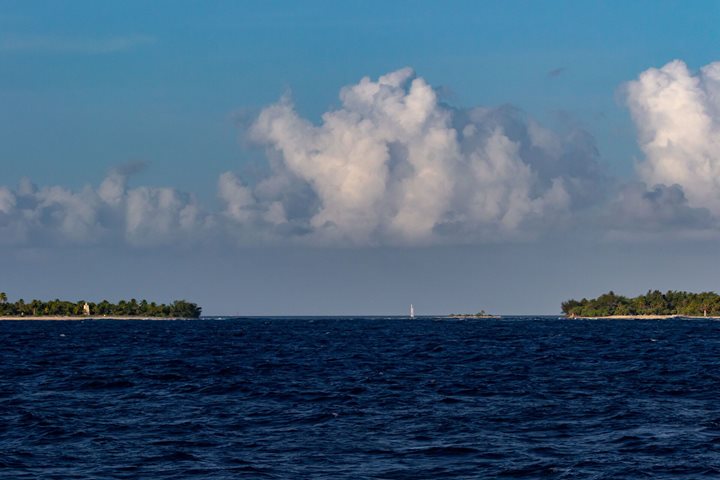Lindblad Expeditions has never visited Kauehi Atoll before now. There is but one navigable pass located in the southwestern region through which we entered around 07:00, escorted by brown boobies. The huge atoll is shaped somewhat like a fat kidney bean with a wide lagoon that measures roughly 11 x 15 miles (18 x 24 km). The lagoon area covers 124 sq miles (320 sq km). However, the actual land area is only six sq miles (16 sq km). Historically, the atoll was known to Europeans as Putake and was labelled as such on early navigation charts. The first recorded visit was made by Capt. Fitzroy of HMS Beagle fame in 1835. A few years later, it was visited by Charles Wilke during the famous United States Exploring Expedition of 1838-1842. Wilkes called the atoll Vincennes, after his ship, but that name did not stick. It is now known by its proper Polynesian name, which means “boat that is involved with fishing.”
After breakfast, we went ashore at the main village of Tearavero. We were welcomed with music, fresh coconuts for drinks, and given demonstrations of weaving with coconut fronds and prepping coconuts for copra harvesting. The population was determined to be 257 people in latest census of 2012, but Viti Fatu, a local man, explained that there are probably 500 people who call Kauehi home. However, most of them are off the island at any particular time. Many have found work elsewhere and school children beyond primary level must board at schools on other islands for their higher education.
We spent our time strolling along the single road that runs the length of the narrow island as we enjoyed this delightful and colorful and friendly community. The central point of the town is the beautiful St. Michael’s Catholic church, which was constructed in 1952 and made entirely out of locally produced island cement. This is the old-styled construction material made of quarried coral rock and coral rubble all cemented together. Traditionally, the cement is produced by burning crushed raw coral (CaCO3), thus reducing it to CaO, which then is rehydrated into a usable cement. The interior is remarkable with its ceiling decorations made from local seashells.
All of us on the guided walk were impressed by the obvious appreciation that the locals have for flowers, because every yard had lots of flowering plants and most houses were decorated with floral arrangements. As one local young man told me, “This island is paradise.” Many of us would agree.
This lagoon had once been an important pearl producing site, but in recent years the upkeep of equipment, labor costs, and availability and price of fuel had made the operation no longer tenable. We saw much in the way of pearl industry material (such as floats, chicken-wire grids, mesh strands for young starter oysters, and lines for the attachment of mature oysters) simply abandoned around some of the houses. We also saw old piles of black-lipped pearl oyster shells that had been processed long ago
In the afternoon, we landed on a beautiful sandy beach at the end of the island where we spent most of the rest of the day. The mayor of Tearavero had invited us to this site and we agreed with her it is a very special place. Conditions were perfect for swimming in the protected shallow water.
Many of us went for a walk through the coconut plantation and forest scrub to the far side of the island to view an amazing little lagoon indented into the island from the atoll’s main lagoon. It is an interesting locale dominated by fine coralline silt, quite unlike anything we had yet seen. The burrowing land crabs seem to much appreciate this habitat. Several were seen out for a stroll after a rain shower. Once everyone was back aboard ship, we sailed back out of the lagoon through the main passage and continued our voyage.







